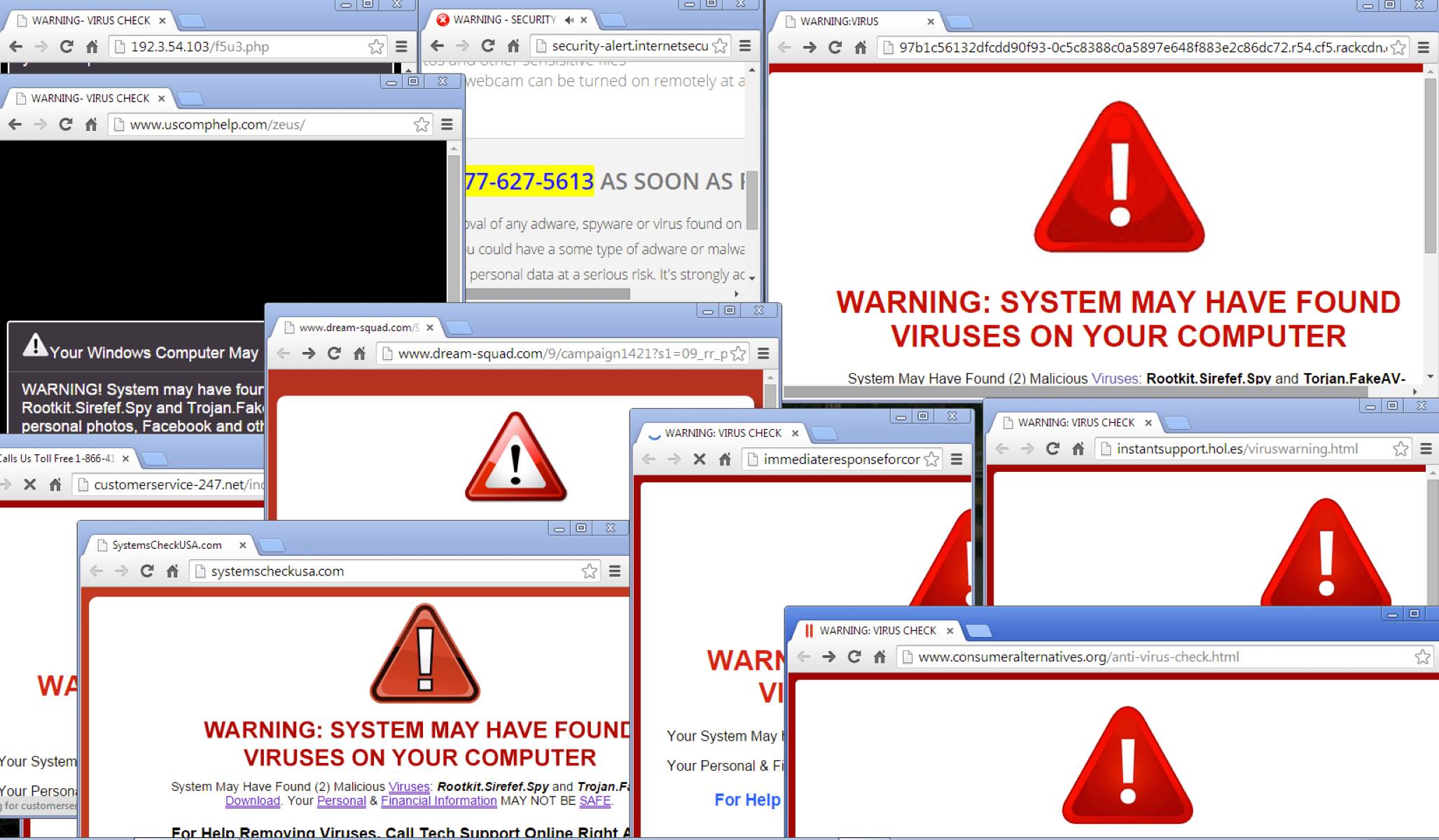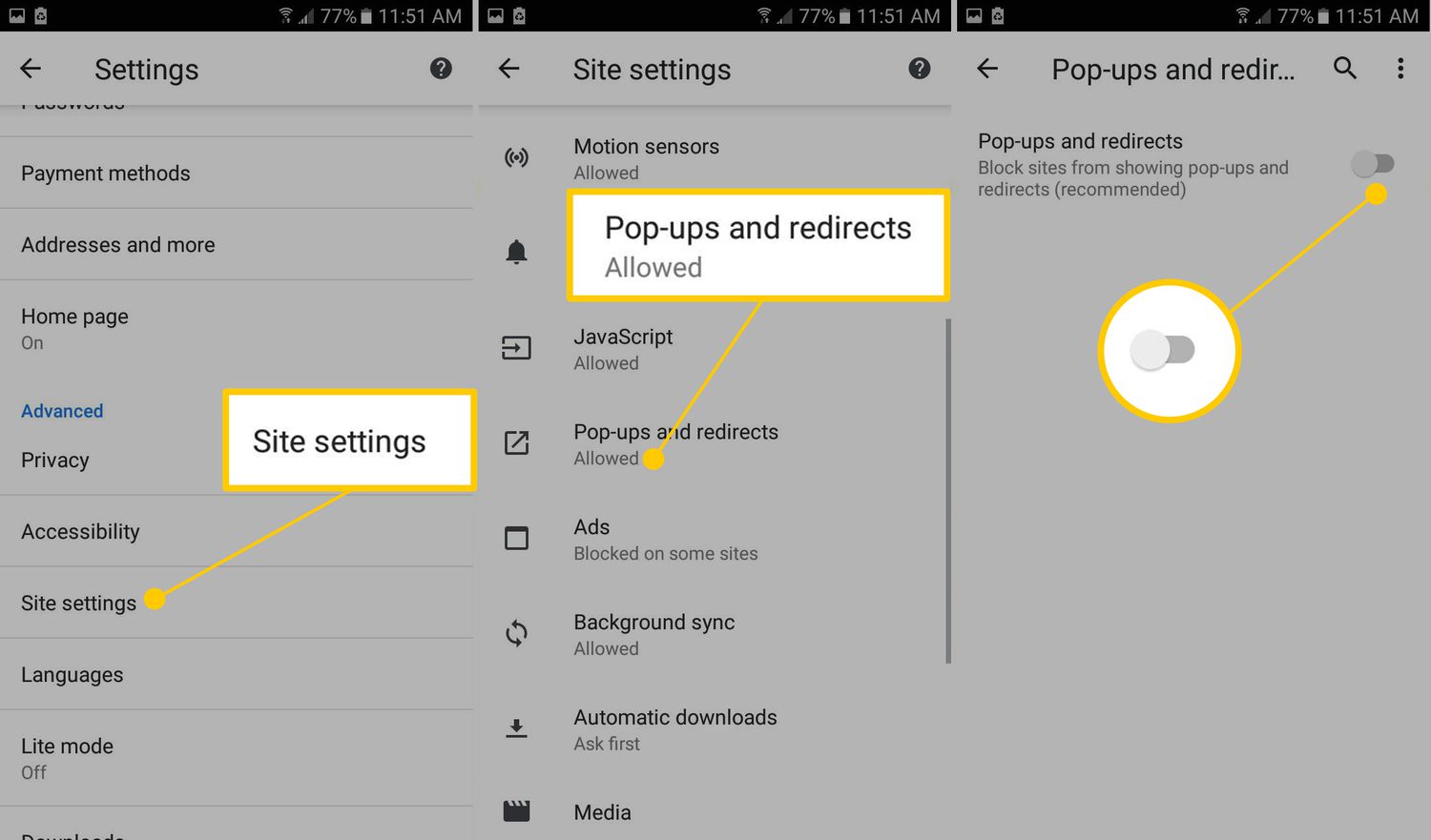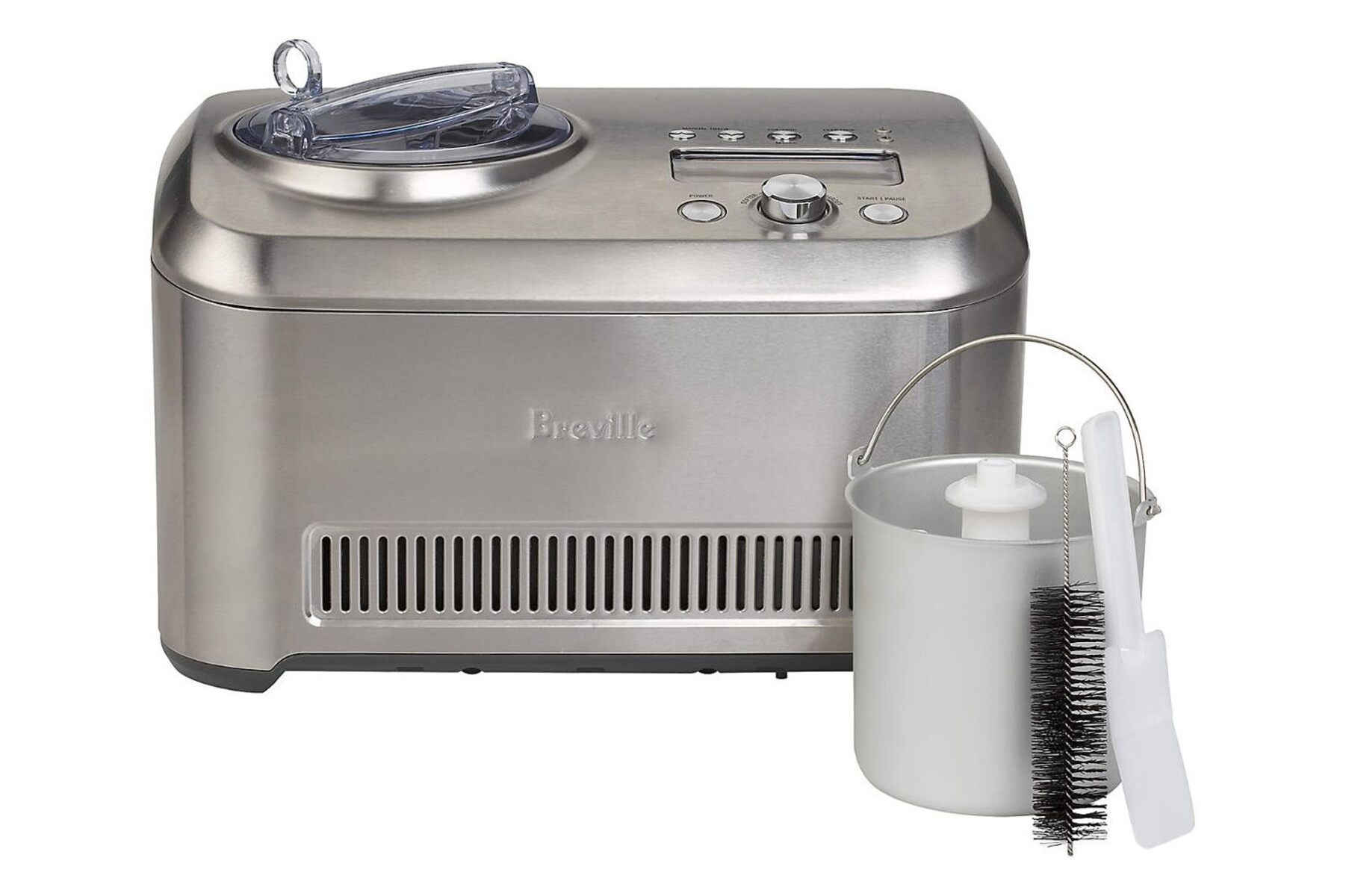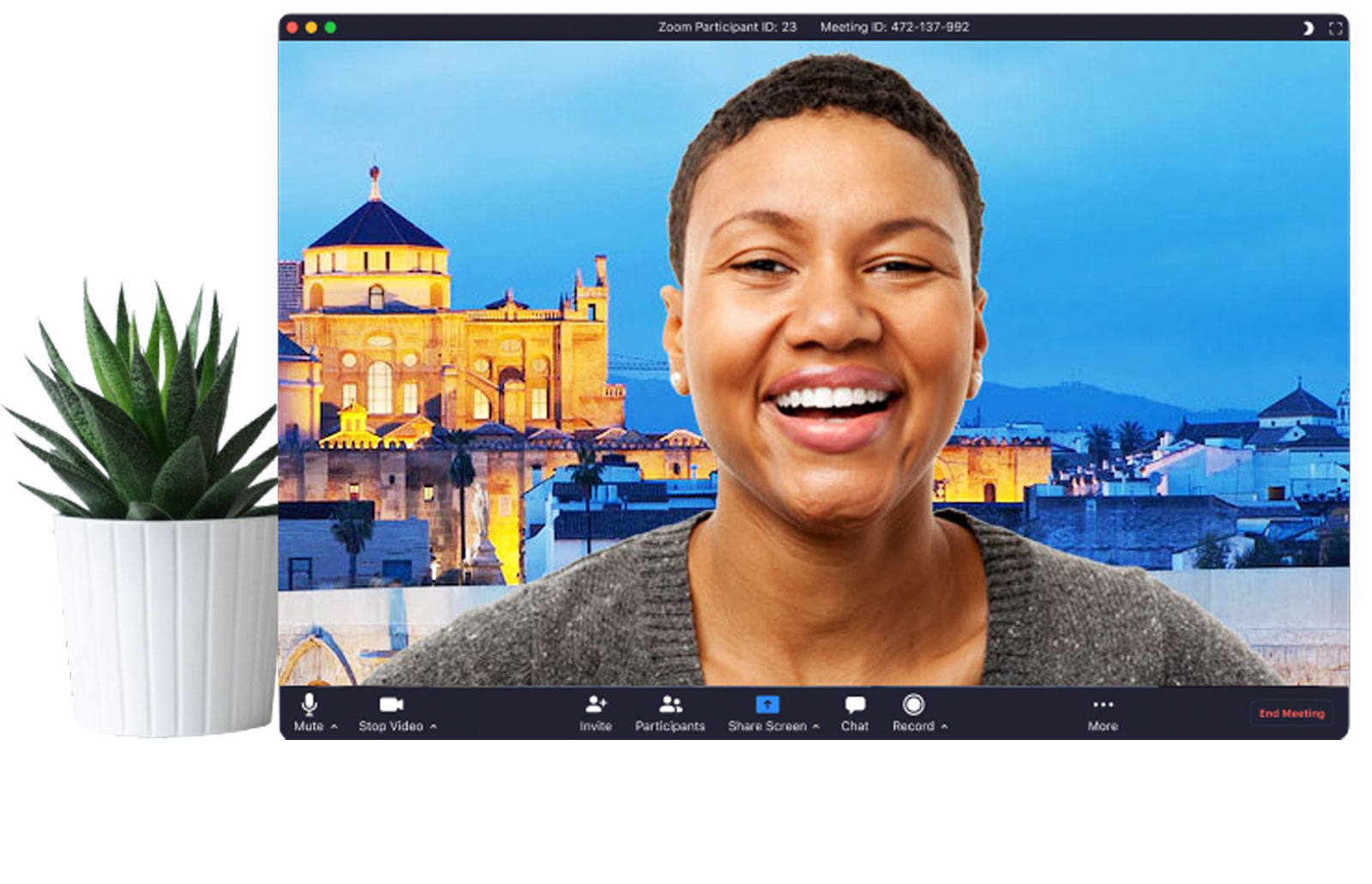Introduction
Pop-ups are a frustrating nuisance that many Windows 10 users have unfortunately encountered. These intrusive windows seem to interrupt our browsing experience at the most inconvenient times, bombarding us with advertisements or even malicious content. But what exactly are pop-ups, and why are they so bothersome?
Pop-ups are small windows that appear on top of the current webpage you are viewing. They can take many forms, ranging from harmless notifications to aggressive advertisements. In some cases, they can even contain malicious software.
The constant stream of pop-ups can disrupt our workflow, slow down our computers, and compromise our internet security. So, why do these pesky pop-ups keep appearing on Windows 10?
There can be several reasons behind the recurrent appearance of pop-ups. One of the most common reasons is that your browser or operating system settings may not be optimized to block them effectively. Additionally, if you frequently visit websites with intrusive advertising or unsafe browsing habits, you are more likely to encounter these irritating pop-ups.
Fortunately, there are various methods to combat pop-ups on Windows 10. Whether you want to utilize the built-in settings, disable pop-ups in specific browsers, or employ third-party pop-up blockers, there are options available to suit your preferences and needs.
In this article, we will guide you through the steps to stop pop-ups on Windows 10. We will explore the built-in settings provided by the operating system and show you how to disable pop-ups in popular browsers such as Chrome, Firefox, and Edge. Furthermore, we will discuss the use of third-party pop-up blockers and scanning for adware/malware.
By following these methods and implementing a few additional preventive measures, you can regain control of your browsing experience and bid farewell to those pesky pop-ups that hinder your productivity and peace of mind.
What are pop-ups?
Pop-ups are small windows that appear on your screen while you are browsing the internet. They can take various forms, such as advertisements, notifications, or alerts. Pop-ups are designed to capture your attention and prompt you to take some specific action, such as clicking on a link or providing your personal information.
These windows are typically generated by websites or specific software installed on your computer. They can appear suddenly and disrupt your browsing experience. Pop-ups can be seen on almost any website, from legitimate ones to malicious or spammy sites.
While some pop-ups may contain important information or legitimate offers, the majority of them are considered intrusive and unwanted. They can interrupt your workflow, distract you from your tasks, and even slow down your computer.
There are different types of pop-ups:
- Advertisement Pop-ups: These pop-ups are often generated by websites to display advertisements. They can be related to the content of the webpage or completely unrelated.
- Subscription Pop-ups: These pop-ups ask you to subscribe to newsletters or mailing lists. They typically appear as overlay windows, offering you the option to enter your email address.
- Browser Warnings: Some pop-ups are generated by your web browser to warn you about potential security threats or malicious websites. These warnings are usually legitimate and should not be ignored.
- Malicious Pop-ups: These pop-ups are designed to deceive or trick users into taking harmful actions. They may claim that your computer is infected with viruses and prompt you to download fake antivirus software or provide your personal information.
Pop-ups can be annoying and disruptive, especially when they occur frequently. They can make it difficult to read content, navigate websites, or complete tasks. Furthermore, clicking on certain pop-ups can lead to the installation of adware, spyware, or other malware on your computer.
Fortunately, there are ways to control and disable pop-ups to ensure a smoother and safer browsing experience. In the following sections, we will explore the methods you can use to stop pop-ups on Windows 10.
Why are pop-ups annoying?
Pop-ups can be incredibly irritating for several reasons, leading to frustration and a negative browsing experience. Here are some of the main reasons why pop-ups are so bothersome:
- Disruption: Pop-ups disrupt your browsing experience by appearing suddenly and taking over the screen. They can cover the content you are trying to read or interact with, making it frustrating to continue with your intended activity.
- Distraction: Pop-ups grab your attention away from the main content of the webpage, diverting your focus. This can be particularly distracting if you are trying to concentrate on a specific task or read an article.
- Intrusion: Pop-ups invade your privacy and interfere with your browsing by forcing themselves into your view without your consent. This intrusive behavior can feel invasive and disrespectful.
- Obstruction: Some pop-ups are designed to make it difficult to close or dismiss them. They may hide the close button or employ deceptive tactics to keep you engaged with their content. This obstruction can be frustrating and time-consuming.
- Slowdown: Pop-ups, especially those generated by ad-heavy websites, can slow down your computer’s performance. They consume system resources, leading to lagging pages and a sluggish browsing experience.
- Security Concerns: While not all pop-ups are malicious, some can pose serious security risks. Clicking on certain pop-ups may lead to the installation of malware or redirect you to phishing websites seeking to steal your personal information. This potential harm can make pop-ups a significant security concern.
- Repetition: When pop-ups keep appearing frequently, it can be incredibly frustrating. Continually closing or dismissing pop-ups can disrupt your workflow and make browsing a frustrating experience.
Overall, pop-ups can be annoying due to their disruptive, distracting, and intrusive nature. They hinder the browsing experience and can pose security risks. As a result, taking steps to stop or minimize the occurrence of pop-ups is highly recommended to ensure a smoother and safer browsing experience on Windows 10.
Why do I keep getting pop-ups on Windows 10?
If you find yourself constantly bombarded with pop-ups on your Windows 10 device, there can be several reasons why they keep appearing. Here are some common explanations:
- Browser Settings: Your browser settings might not be configured to effectively block pop-ups. Some websites can bypass the default pop-up blockers or utilize techniques that override your browser’s settings.
- Unsafe Websites: Visiting unsafe websites that have aggressive advertising tactics or deceptive practices can increase the likelihood of encountering pop-ups. These websites may have adware or other intrusive scripts that generate pop-ups as a means of generating revenue.
- Outdated Software: Using outdated browsers or operating system software can leave your device vulnerable to pop-ups. Security vulnerabilities in older versions may allow malicious websites or programs to bypass pop-up blockers.
- Potentially Unwanted Programs (PUPs): Certain programs that you have installed on your computer may contain adware or potentially unwanted programs. These programs can trigger pop-ups as a form of advertising or to collect user data.
- Browser Extensions: Some browser extensions or add-ons can cause pop-ups to appear. These extensions may have been installed without your knowledge or have permissions to generate pop-ups.
- Clicking on Suspicious Links: Clicking on suspicious or malicious links, especially in emails, can lead to the installation of adware or malware, which can then generate pop-ups on your Windows 10 device.
- Redirects from Other Websites: You may be redirected to websites that produce pop-ups when you click on links from other websites or engage with certain online advertisements.
- Social Engineering: Some pop-ups employ social engineering tactics to trick users into clicking on them. They may display messages that claim your computer is infected or that your personal information is at risk, urging you to take immediate action.
To mitigate the issue of recurring pop-ups on Windows 10, it is important to address these underlying causes. By taking steps to optimize your browser settings, update your software, use reputable extensions, and practice safe browsing habits, you can significantly reduce the frequency and impact of pop-ups on your Windows 10 device.
How to stop pop-ups using the built-in Windows 10 settings
Windows 10 provides built-in settings that allow you to control and block pop-ups. By utilizing these settings, you can minimize the annoyance of intrusive pop-ups. Here’s how you can do it:
- Open the Settings: Click on the Windows Start button and select the gear icon to open the Settings menu.
- Select the Privacy option: In the Settings menu, click on the “Privacy” option to access the privacy settings.
- Navigate to the “Pop-ups and redirects” settings: On the left sidebar, select “Pop-ups and redirects” to open the specific settings related to pop-ups.
- Toggle the provided option: You will see a toggle switch labeled “Block pop-ups” under the “Pop-ups and redirects” settings. Toggle this switch to the “On” position to enable pop-up blocking.
- Customize the settings (optional): If you want more control over the pop-up blocking, you can also toggle the switches for “Send Do Not Track requests” and “Use page isolation.” These options can enhance your privacy and security while browsing.
- Exit the settings: Once you have enabled the pop-up blocking options, you can close the Settings window.
By following these steps and enabling the pop-up blocking feature in the Windows 10 settings, you can significantly reduce the number of pop-ups that appear while browsing the internet.
Note that the built-in pop-up blocker in Windows 10 works at the system level and affects all browsers you use. However, it may not block all types of pop-ups, especially those that are cleverly designed to bypass standard blocking mechanisms. To further enhance your pop-up blocking capabilities, you may need to utilize additional methods, which we will explore in the following sections.
How to disable pop-ups in specific browsers (Chrome, Firefox, Edge)
In addition to the built-in Windows 10 pop-up blocking settings, popular web browsers such as Google Chrome, Mozilla Firefox, and Microsoft Edge also offer their own options to disable pop-ups. Here’s how you can do it in each browser:
- Google Chrome:
- Open Chrome and click on the three-dot menu icon in the top-right corner.
- Select “Settings” from the drop-down menu.
- Scroll down and click on “Privacy and security” in the left sidebar.
- Click on “Site settings.”
- Under the “Permissions” section, click on “Pop-ups and redirects.”
- Toggle the switch to block pop-ups.
- Mozilla Firefox:
- Open Firefox and click on the menu icon (three horizontal lines) in the top-right corner.
- Select “Options” from the drop-down menu.
- In the left sidebar, click on “Privacy & Security.”
- Scroll down to the “Permissions” section.
- Under “Block pop-up windows,” check the box to block pop-ups.
- Microsoft Edge:
- Open Microsoft Edge and click on the three-dot menu icon in the top-right corner.
- Scroll down and click on “Settings.”
- Click on “Privacy, search, and services” in the left sidebar.
- Scroll down to the “Security” section.
- Under “Block pop-ups,” toggle the switch to block pop-ups.
By following these steps in each respective browser, you can disable pop-ups and improve your browsing experience. Remember to save your changes and restart the browser if necessary.
Keep in mind that some websites may still display pop-ups even with these settings enabled if they find ways to bypass browser settings. In such cases, you can consider using third-party pop-up blockers or scanning for adware/malware, as we will discuss in the upcoming sections.
How to use third-party pop-up blockers
In addition to the built-in pop-up blocking settings provided by Windows 10 and web browsers, you can also utilize third-party pop-up blockers. These tools offer an extra layer of protection and customization options for blocking unwanted pop-ups. Here’s how you can use third-party pop-up blockers:
- Research and choose a reputable pop-up blocker: There are various third-party pop-up blockers available, so it’s essential to select one from a reputable source. Look for reviews and recommendations to ensure that the pop-up blocker is reliable and effective.
- Download and install the pop-up blocker: Visit the official website of the pop-up blocker you have chosen and follow the instructions to download and install it on your Windows 10 device.
- Configure the pop-up blocker: Once installed, launch the pop-up blocker and look for settings or preferences to customize its behavior. You may be able to specify which types of pop-ups should be blocked, set exceptions for certain websites, or adjust the level of strictness for pop-up blocking.
- Enable the pop-up blocker: Ensure that the pop-up blocker is enabled and running in the background. Some pop-up blockers may have a browser extension or add-on component that needs to be activated as well.
- Test the pop-up blocker: Visit websites known for generating pop-ups or browse as you normally would to see if the pop-up blocker effectively blocks unwanted pop-ups. Make sure to check different websites and scenarios to ensure comprehensive protection.
- Adjust settings if necessary: If you find that some desired pop-ups are being blocked or certain unwanted pop-ups are still getting through, you can go back to the pop-up blocker’s settings and make adjustments accordingly.
By using a reliable third-party pop-up blocker, you can enhance your pop-up blocking capabilities and have more control over the types of pop-ups you encounter while browsing the internet on your Windows 10 device.
Remember to keep the pop-up blocker software up to date by installing updates from the developer. This helps ensure that the blocker remains effective and can protect you against the latest pop-up threats.
How to scan for and remove adware/malware causing pop-ups
In some cases, persistent pop-ups on your Windows 10 device may be caused by adware or malware. These malicious programs can infiltrate your system, generate unwanted pop-ups, and compromise your online security. Here’s how you can scan for and remove adware/malware causing pop-ups:
- Install reputable anti-malware software: Choose a well-known and trusted anti-malware program to ensure comprehensive protection. Some popular options include Malwarebytes, Avast, and Bitdefender. Download and install the chosen software on your Windows 10 device.
- Update the anti-malware program: After installation, open the anti-malware program and check for available updates. Install any updates to ensure that the program has the latest threat definitions and detection capabilities.
- Run a full system scan: Initiate a full system scan using the anti-malware program. This scan will search for any adware or malware infections on your Windows 10 device, including those that may be causing the pop-ups.
- Quarantine or remove detected threats: Once the scan is complete, review the scan results. If any adware or malware is detected, follow the prompts to quarantine or remove the threats. Be cautious and only take action on known threats verified by your anti-malware software.
- Restart your computer: After quarantining or removing the detected threats, restart your Windows 10 device. This helps ensure that any remaining traces of the adware or malware are fully eliminated.
- Regularly scan and update: To prevent future adware or malware infections, establish a habit of regularly scanning your Windows 10 device with the anti-malware program and keeping it updated with the latest security patches and definitions.
By scanning for and removing adware or malware, you can address the underlying cause of the pop-ups on your Windows 10 device. This not only eliminates the immediate annoyance of pop-ups but also safeguards your online security and protects your personal information.
Remember to exercise caution when downloading and installing software from the internet. Always obtain software from reputable sources, and be wary of suspicious websites or links that may lead to the installation of adware or malware.
Additional tips to prevent pop-ups on Windows 10
While utilizing the built-in Windows 10 settings, browser options, and third-party blockers can significantly reduce the occurrence of pop-ups on your device, there are additional measures you can take to enhance pop-up prevention. Here are some additional tips:
- Keep your operating system and software up to date: Regularly install updates for Windows 10 and other software on your device. These updates often include security patches that can help protect against vulnerabilities exploited by pop-ups.
- Use a reputable antivirus program: Install a reliable antivirus program and keep it updated. A good antivirus program can detect and block malicious pop-ups and other threats.
- Be cautious when clicking links: Avoid clicking on suspicious links, especially in emails or on unfamiliar websites. Verify the legitimacy of the source before clicking to prevent inadvertently triggering pop-ups.
- Exercise safe browsing habits: Stick to reputable websites, avoid downloading files from unknown sources, and be cautious of online advertisements. Be selective in granting permissions to websites and block or remove any suspicious browser extensions.
- Enable pop-up blocker extensions (if available): Some browsers allow the installation of additional pop-up blocker extensions or add-ons. Consider installing reputable extensions that can further enhance your pop-up blocking capabilities.
- Clear your browser cache and cookies: Regularly clear your browser cache and cookies as these can sometimes contain information that results in unwanted pop-ups.
- Be mindful of opting into newsletters and offers: When subscribing to newsletters or offers, ensure that you trust the website and the organization behind it. Read the terms and conditions to ensure that you won’t receive unwanted pop-ups as a result of your subscription.
- Consider using a virtual private network (VPN): A VPN can add an extra layer of security and privacy while browsing, preventing certain types of pop-ups and protecting your personal information.
By implementing these additional tips alongside the methods discussed earlier, you can further strengthen your defense against pop-ups on your Windows 10 device.
Remember that pop-ups can evolve, and new techniques to bypass blockers may emerge. Staying vigilant, staying up to date with security practices, and being aware of the latest threats are essential in maintaining a pop-up-free browsing experience on Windows 10.
Conclusion
Dealing with pop-ups on your Windows 10 device can be frustrating and disruptive to your browsing experience. However, by following the steps and tips outlined in this article, you can effectively minimize the occurrence of these annoying pop-ups and regain control of your online activities.
We started by understanding what pop-ups are and why they can be so irritating. We then explored the reasons why you might be constantly encountering pop-ups on Windows 10, such as browser settings, unsafe websites, outdated software, potentially unwanted programs, clicking on suspicious links, redirects, and social engineering.
To stop pop-ups, you can utilize the built-in Windows 10 pop-up blocking settings. Additionally, you can disable pop-ups in specific browsers like Chrome, Firefox, and Edge. If the built-in settings are not sufficient, you can opt for third-party pop-up blockers, which provide more customization options and enhanced protection.
In case the pop-ups persist, it’s essential to scan for and remove adware or malware that may be causing the issue. By using reputable anti-malware software, you can detect and eliminate any malicious programs on your Windows 10 device.
Lastly, we provided additional tips to prevent pop-ups on Windows 10, such as keeping your operating system and software up to date, using a reliable antivirus program, exercising caution when clicking links, practicing safe browsing habits, enabling pop-up blocker extensions, clearing browser cache and cookies, being mindful of opting into newsletters and offers, and considering the use of a virtual private network (VPN).
By combining these methods and staying proactive in maintaining a secure and updated system, you can significantly reduce the annoyance and potential risks associated with pop-ups on your Windows 10 device.

























